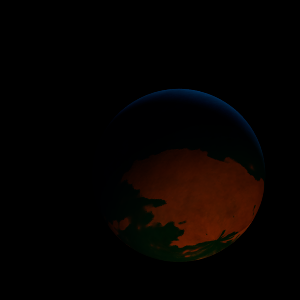|
|
Space Astro
|
Info for exoplanet "Myuhi Yo"
| Scientific (actual) data |
|---|
| Name | K2-188 b |
| Planet status | Confirmed |
| Radius | 0.12 |
| Orbital period | 1.74217 |
| Semi major axis | 0.0289 |
| Discovered | 2018 |
| Updated | 2021-02-05 |
| Tconj | 2457140 |
| Impact parameter | 0.4 |
| Temperature (kelvin) | 1692 |
| Publication | Published in a refereed paper |
| Detection type | Primary Transit |
| Alternate names | 2MASS J08391527+2321269 b, EPIC 212164470 b, EPIC 212164470.02, WISE J083915.28+232126.8 b |
| Star name | K2-188 |
| Right ascension | 129.81° |
| Declination | 23.36° |
| Mag j | 11.502 |
| Mag h | 11.246 |
| Star distance | 452.9 |
| Star metallicity | -0.01 |
| Star mass | 1.06 |
| Star radius | 1.19 |
| Star temperature | 5977 |
| Star alternate names | 2MASS J08391527+2321269, EPIC 212164470, WISE J083915.28+232126.8 |
| Wikipedia article | K2-188 b |
Back
| |
| Fictional info (?) |
|---|
| Suggested name | Myuhi Yo |
| Planet type | Hot planet |
| The smooth Borealis basin in the northern hemisphere covers 20 percent of the planet and may be a giant impact feature.
The two polar ice caps appear to be made largely of sand.
The surface of this harsh planet is said to have strange and interesting carnivores known as "Byabuga". They survive only by consuming the Gisonya-yo in the shade. They are believed to be related to Byoke but with 6 eyes and vary in size from 5 to 6 cm. The Byabuga can survive temperatures from -80 to -40°C and the high radiation level. |
| Estimated population | 60000000000 |
| Atmosphere | Oxygen | 43% |
| Water | 29% |
| Methane | 26% |
| Carbon dioxide | 1.8% |
| Atmospheric pressure | 0.5 bar |
 |
| No known satellites |
| Google search for Myuhi yo |
|
Website by Joachim Michaelis
|
|
|
|